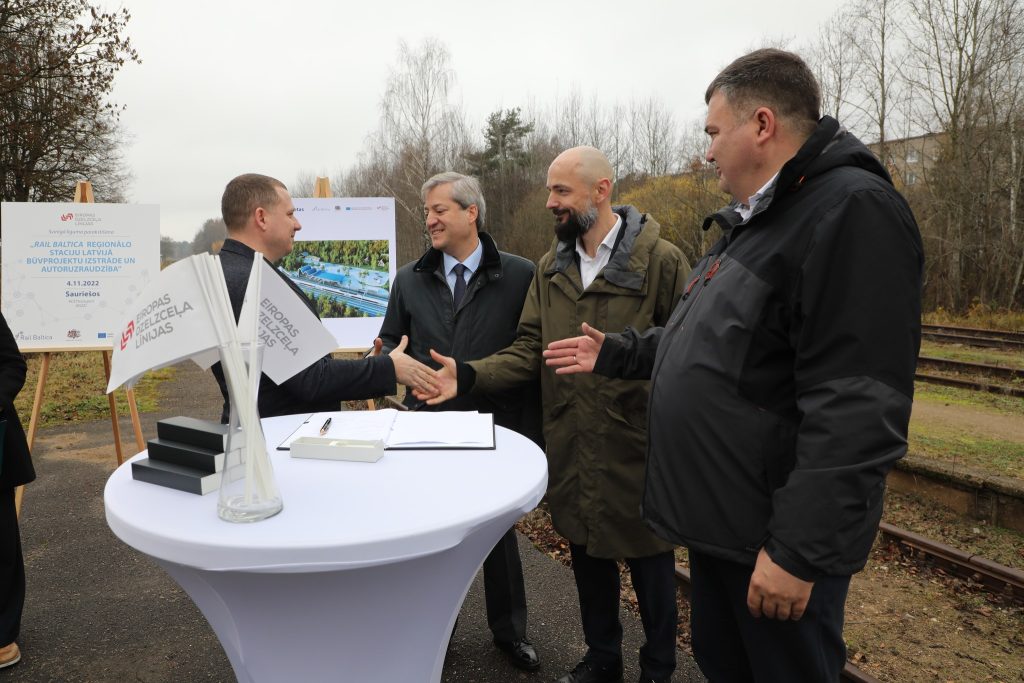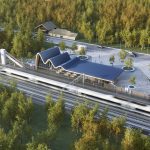 Eiropas Dzelzceļa līnijas and the Latvian-Spanish association RERE Ineco signed the cooperation agreement for construction design of Rail Baltica in Latvia which will be served by 16 regional stations and the two main stations in the capital, Riga – Riga Central Station and the station at the Riga International Airport.
Eiropas Dzelzceļa līnijas and the Latvian-Spanish association RERE Ineco signed the cooperation agreement for construction design of Rail Baltica in Latvia which will be served by 16 regional stations and the two main stations in the capital, Riga – Riga Central Station and the station at the Riga International Airport.
Regional trains of Rail Baltica line will stop both at international stations and regional stops and reach the speed of up to 200 km/h.
“As soon as the Rail Baltica regional trains will start running, people will no longer have to adjust by choosing their places of residence at a closer distance from the centre or Riga or their own vicinities – for example, vicinity near Bauska or Salacgrīva will be equally good location the place of residence, and the place of work will be reachable quickly and conveniently. Furthermore, opportunities to create new jobs in regions or even work in the neighboring countries, for example, in Kaunas or Parnu, will be provided”, Kaspars Vingris, Chairman of the Board of Eiropas Dzelzceļa līnijas said.
“The company is already actively involved working with Rail Baltica project and is ready to further contribute with its international knowledge to develop the regional station construction design,” said Jose Maria Llorente which represents winner company association and the Spanish company Ineco.
The regional mobility points are expected to bring together different modes of transport including railway, state and municipal buses, private vehicles and electric vehicles, scooters, bicycles and all other micro mobility tools, as well as develop a range of various services.
“Regional traffic and mobility points will become an essential part of Rail Baltica. However, they will only be as effective as the connections to them with the relevant supporting infrastructure and micro-mobility solutions,” Kitija Gruškevica, the Head of Latvian branch at RB Rail AS said.
Rail Baltica railway system is planned in such a way as to be able to provide cross-border traffic of regional trains, thus allowing connection of border regions in Latvia, Lithuania and Estonia. The system will enable ensuring efficient transfer to international trains.
Subject to the expected amounts of passengers, overall, three types of regional stations are planned – large, medium, and small stations. Station designs refer to the traditional vertical constructions of buildings in the Baltic States, inspired by the Baltic Sea, whereas station buildings are characterised by a glass facade, enabling designing of the premises light and transparent, as well as using wooden panel decoration for the wall design.
Various new technologies are also planned to be used in the stations, and it is planned that all station buildings will be near-zero emission buildings with the highest environmental requirements. When planning regional stations, development of the station’s surrounding area is considered to provide passengers an opportunity to not only enjoy attractive environment, but also use functionally planned, easy-to-use and well-equipped outdoor space.
In Latvia, Rail Baltica will be 260 km long and construction works are expected to start in 2023 outside Riga. 31 October was the deadline for bids’ submission covering the construction of the mainline, five companies and JVs being selected to enter this stage.
Share on:







